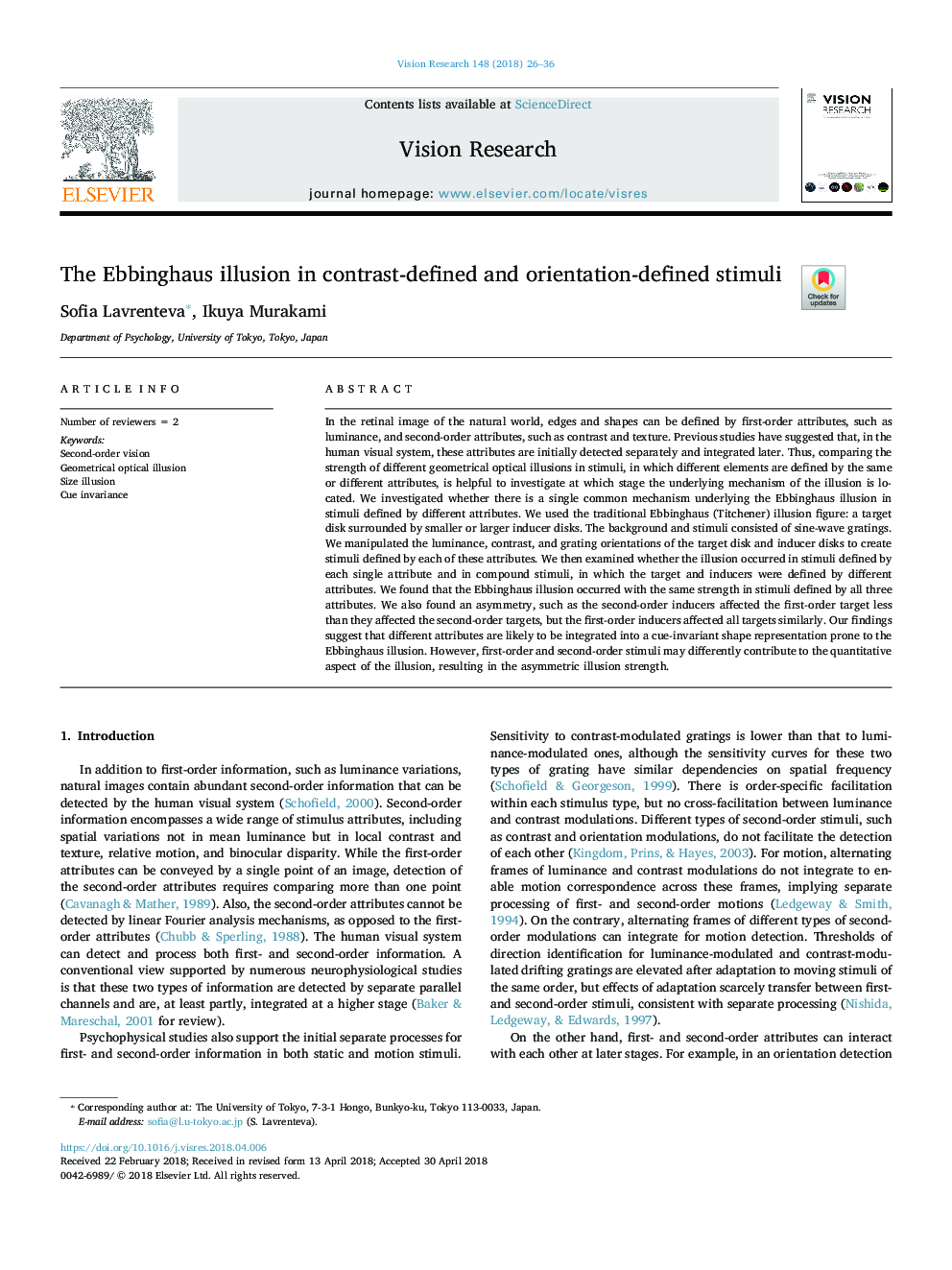| Article ID | Journal | Published Year | Pages | File Type |
|---|---|---|---|---|
| 8795296 | Vision Research | 2018 | 11 Pages |
Abstract
In the retinal image of the natural world, edges and shapes can be defined by first-order attributes, such as luminance, and second-order attributes, such as contrast and texture. Previous studies have suggested that, in the human visual system, these attributes are initially detected separately and integrated later. Thus, comparing the strength of different geometrical optical illusions in stimuli, in which different elements are defined by the same or different attributes, is helpful to investigate at which stage the underlying mechanism of the illusion is located. We investigated whether there is a single common mechanism underlying the Ebbinghaus illusion in stimuli defined by different attributes. We used the traditional Ebbinghaus (Titchener) illusion figure: a target disk surrounded by smaller or larger inducer disks. The background and stimuli consisted of sine-wave gratings. We manipulated the luminance, contrast, and grating orientations of the target disk and inducer disks to create stimuli defined by each of these attributes. We then examined whether the illusion occurred in stimuli defined by each single attribute and in compound stimuli, in which the target and inducers were defined by different attributes. We found that the Ebbinghaus illusion occurred with the same strength in stimuli defined by all three attributes. We also found an asymmetry, such as the second-order inducers affected the first-order target less than they affected the second-order targets, but the first-order inducers affected all targets similarly. Our findings suggest that different attributes are likely to be integrated into a cue-invariant shape representation prone to the Ebbinghaus illusion. However, first-order and second-order stimuli may differently contribute to the quantitative aspect of the illusion, resulting in the asymmetric illusion strength.
Keywords
Related Topics
Life Sciences
Neuroscience
Sensory Systems
Authors
Sofia Lavrenteva, Ikuya Murakami,
